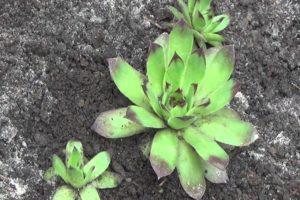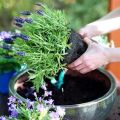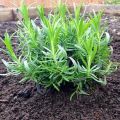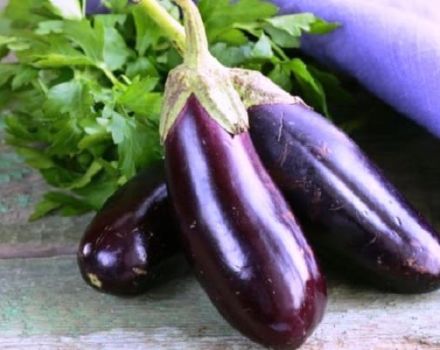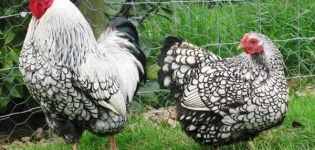Planting and caring for lavender outdoors, pruning and preparing for winter
Lavender has proven itself well and is popular because of its unpretentiousness and exquisite flowering, which provides the grower with incredible beauty throughout the season. Planting and caring for lavender in the open field is of interest to many novice flower growers and those who have chosen this beautiful culture.
General information about the plant
Lavender is a perennial shrub of the Lamb family, which captivates with its beauty, elegance, delicate aroma. The plant forms a powerful taproot, woody root system and branched, erect stems. The bushes are decorated with oblong leaves with a solid or serrated edge.
Lavender flowers are characterized by a variety of colors. At the end of tall thin peduncles there are 6-10 flowers, collected in false whorls, forming spike-shaped inflorescences. At the end of flowering, seeds are formed in the form of dense dry seeds in the form of an oval, which has a dark brown color.
Varieties and varieties of lavender
There are 4 types of crops in which several varieties are distinguished.
Narrow-leaved lavender (English). The bushes have a powerful fibrous root reaching up to 2 m in length and shoots with a woody part at the base. Lavender is decorated with linear leaves, differing in density, slightly lowered, painted green with a gray tint. It blooms in late summer with flowers collected in spike-shaped inflorescences.
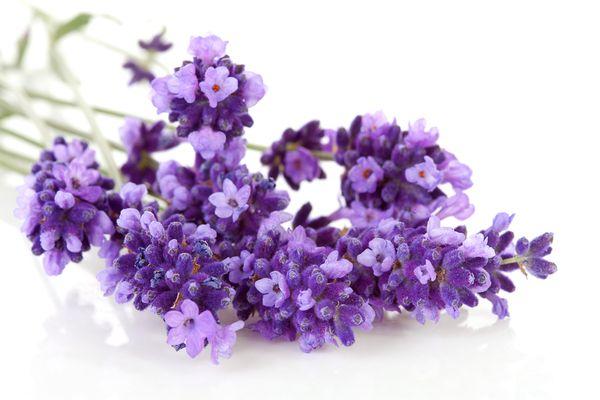
In gardening, varieties are used such as:
- Alba;
- Sentiva Silver;
- Munstead;
- Rosea;
- Hidcote;
- Sentiva Blue.
Lavender broadleaf (French). This species has a strong aroma. Flowering is observed earlier than other species - in late spring. Inflorescences of all kinds attract attention. There are such varieties:
- Helmsdale;
- Tiara;
- Rocky Road Regal Splendour;
- Willow Vale.
Hybrid lavender. This variety is called Dutch and can be grown commercially. It is valued for its large bushes, reaching a height of 2 m, and silvery leaves. It pleases with blooming with large oblong flowers in July.
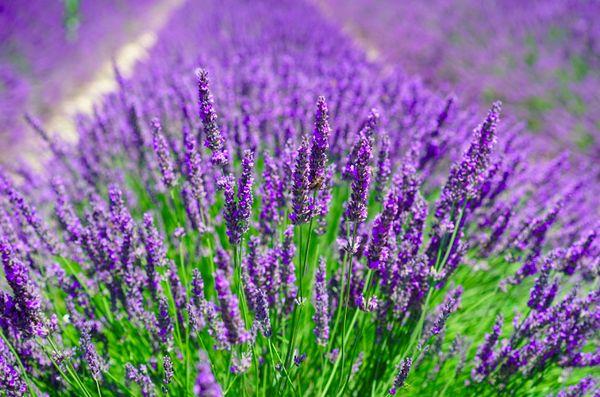
The following varieties are popular:
- Richard Gray;
- Arabic;
- Grosso.
Lavender toothed. The plant is a medium-sized shrub, which is used for decorative purposes. Has earned its place in the flower beds thanks to the soft green foliage with a gray tint and large fragrant inflorescences. The species is subdivided into the following varieties:
- Royal Crown;
- Pedundulata;
- Regal Splendour.
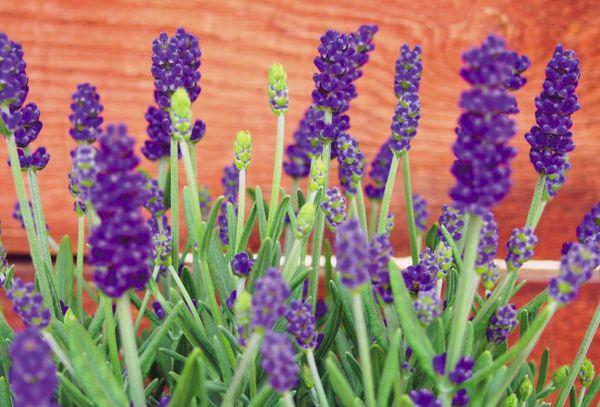
The subtleties of growing a flower
To get a blooming healthy lavender in the garden or in the country, you need to choose the right place, know when to plant a crop, how to plant a plant in open ground. And then the beautiful flower can be admired from May until late autumn.
Seat selection
The guarantee of successful cultivation of lavender is the correct planting site. Therefore, it is important to know where to plant the culture. The plant loves open areas that are illuminated by the rays of the sun. Bushes can take root in the shade, but they will not delight with abundant and long flowering. The root system of lavender is sensitive to increased soil moisture. Therefore, you need to abandon planting it in wetlands.
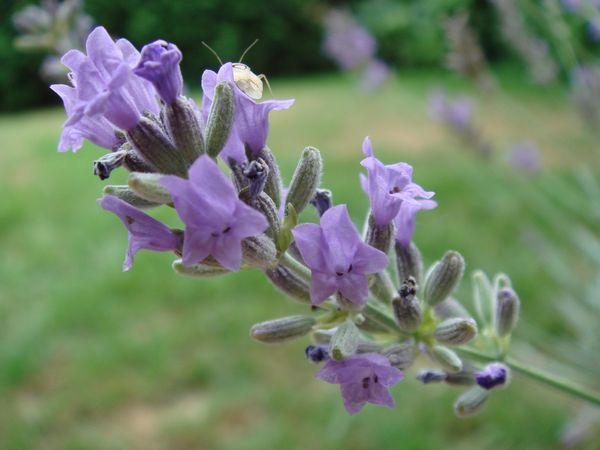
The plant is demanding on the level of acidity and soil structure. Before planting, add wood ash or lime to the soil, these substances will effectively reduce acidity. And in order to provide porous soil, compost is systematically applied to the flower bed. Fertilizer will loosen the soil and enrich it with all the necessary nutrients.
When to plant
Sow seeds in the ground in October. Seedlings are planted for seedlings in February or March. Seedlings are planted in the soil in the last days of May or in the first decade of June.
Landing features
Flowers can be bred not only from seedlings, but also from seeds. The seed method is more labor intensive, which is why gardeners choose seedling cultivation. To do this, sow seeds in the last days of February - early March, so that the young sprouts have time to grow stronger before moving them into open soil.

You need to plant lavender seedlings at the end of May. Prepare landing pits in advance. Effective perception of the flower bed is created while maintaining the optimal viewing distance. In the process of planting, adhere to a distance between planting units of 80-90 cm for compact varieties, and for tall hybrids - 120 cm. The depth of the grooves depends on the size of the roots of the seedlings.
Place the seedlings in a hole, spreading the roots, and cover the lavender so that its root collar is 5-6 cm deep, then water abundantly.
If the flower bed is located in areas with a warm climate, then lavender can be grown using seeds. For this, podzimny sowing is used, which includes planting seeds in the soil in October. Planting material must be sown to a depth of 3-4 cm, and the soil must be tamped from above. Watering is essential in dry autumn weather. In winter, cover the flowerbed with snow.
Lavender care tips
In order for lavender to remain beautiful and healthy for a long time, it is necessary to properly and timely care for the plant and carry out all agricultural techniques.

Soil processing near bushes
Lavender does not thrive on dense soils. Its roots require good air circulation. Weeds also need to be removed as they can drown out young shrubs. Loosening and weeding are mandatory crop care procedures.
Watering mode
With water, the crop receives all the nutrients for normal growth and flowering, so lavender should be watered regularly, especially in hot, dry weather.
Pruning lavender bushes
When growing lavender, pruning is required annually. As the flowering ends, cut off the wilted inflorescences. This will help stimulate more active and lasting flowering and give a decorative look to the flowers. In the autumn, shorten the branches to maintain compactness, and also so that they do not break under the snow and do not freeze in a harsh winter.
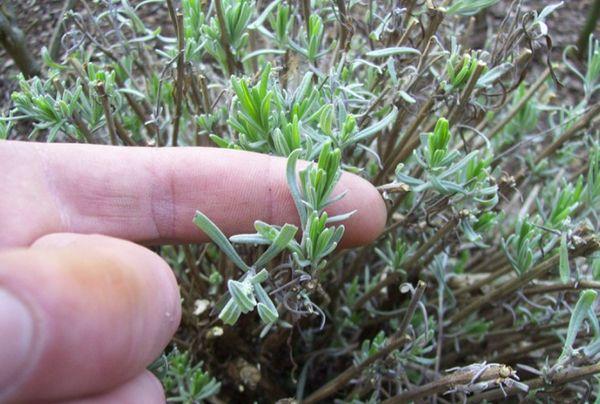
Bushes at the age of 10 years can be rejuvenated by cutting off the shoots 5-10 cm from the soil surface in the fall.
Fertilization
Perennial lavender is very responsive to feeding. It is important to respect the dosage when applying fertilizers. Use only complex mineral dressings.Add them before flowering, concentration - 2 tbsp. l. 10 liters of water. Water the bushes with the finished composition.
Preparing for winter
Preparing lavender for the cold winter includes a cycle of activities that will allow the plant to cope with the harsh conditions of the middle lane. The flower does not tolerate a winter with little snow and a decrease in temperature indicators to -25 degrees, so you should take care of its reliable shelter. To do this, at the end of the season, before wintering, cut the bushes of the plant and build a shelter from the branches of coniferous trees.
Protection against diseases and pests
In the process of growing, gardeners are faced with a disease such as gray rot, the development of which can be triggered by regular stagnation of liquid in the soil due to improper watering or prolonged rains. This disease does not respond to treatment. Therefore, the infected bush must be dug up and burned.
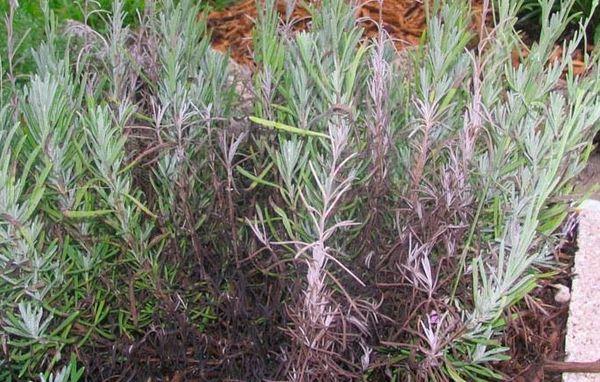
Also, lavender is not immune to pest attacks. The plant can be chosen by rainbow beetles, slobbering pennies. These insects can be harvested by hand, as well as changing mulch and treating shrubs using special insecticides.
Breeding methods
Lavender is grown from seed, and propagates by dividing the bush, layering and cuttings:
- Breeding by cuttings. To do this, cut cuttings 8-10 cm long from the shoot. Plant them for rooting in loose, moist soil, deepening the lower cut by 2-3 cm, and cover with jars. You need to cover until the roots form on the cuttings.
- By dividing the bush. At the initial stage, the selected plant should be prepared. In the autumn, cut a powerful, healthy shrub at a height of 10 cm and huddle, filling all the space between the branches. Repeat hilling in spring. During the summer, the bush will give growth. And then in the fall you can dig it up, dividing it into parts that have well-developed roots and stems, and plant it.
- Reproduction by layering. In the spring, fold back the lavender shoots and fold them into holes, the depth of which is 3-4 cm, and sprinkle with soil. Water the entire summer period, and in spring, the shoots that have taken root should be disconnected from the bush and planted in a permanent place.
Application in landscape design
There are many ideas for decorating decorative flower beds in landscape design. Lavender will harmoniously complement the landscape around the house with its colors, exquisite flowering and incredible beauty. The bushes in the rock garden and mixborder look gorgeous. They are given a place in the center of the flower bed, where they are clearly visible from all sides.
Tall varieties can be planted in small groups, for example, on alpine hills. At the same time, just do not disrupt the design of the mountain landscape and choose the right neighbors.
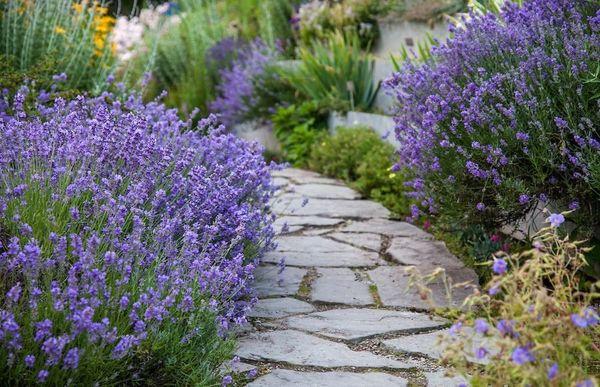
Lavender looks gracefully as a border that adorns the alley in the garden. Flower framing allows you to divide the garden into zones. Also, the plant will look good next to elegant standard roses.
A carpet of flowers can become an original decoration of the garden. To do this, determine the height of the shrubs in advance and systematically cut them at the same level.
Growing lavender will not be difficult even for beginner growers. And with proper planting and proper care, an evergreen perennial will decorate flower beds in the garden with its flowering for a long time.

